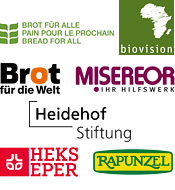News
16.11.2015
Adult obesity rate in US hits 38%, women overtake men

Obesity rates in the United States continue to rise despite national efforts to promote healthy lifestyles and diets. According to a new survey by the U.S. Centers for Disease Control and Prevention published on Thursday, obesity rates climbed to almost 38% for adults in 2013-2014, up from about 32% a decade ago. “This is a striking finding” and suggests that a situation that was thought to be stable is getting worse, said Dr. William Dietz, an obesity expert at George Washington University. The report found that the prevalence of obesity was significantly higher in women (38.3%) than in men (34.3%). Obesity rates for men and women had been roughly the same for about a decade. “That’s kind of a new finding,” said the report’s lead author, Cynthia L. Ogden. “Now, what’s happened is prevalence in women has gone above what it was in men again.” The most striking levels of obesity were found among ethnic minorities. About 57% of black women were obese from 2011 to 2014, followed by Hispanic women at 46% and Hispanic men at 39%. The prevalence of obesity was lowest among Asians, who had a combined rate of about 12%. The good news is that obesity among children at least remained unchanged in 2013 and 2014 – 17% of U.S. Americans aged 2 to 19 were obese, the same as in 2003 and 2004. The new figures comes after years of anti-obesity campaigns to encourage healthy eating and physical activity. The numbers are from a regular government survey with about 5,000 participants that is released every two years and in which participants are actually weighed. Obesity in adults was defined as a Body Mass Index (BMI) of greater than or equal to 30, a indicator defined as the weight in kilograms divided by the square of the height in metres. (ab)
- The New York Times: Obesity Rises Despite All Efforts to Fight It, U.S. Health Officials Say
- Associated Press: Obesity still rising among US adults, women overtake men
- NCHS Data Brief: Prevalence of Obesity Among Adults and Youth: United States, 2011–2014
- BBC News: US obesity rates 'rising for first time since 2004'
11.11.2015
UN kicks off 2016 International Year of Pulses to highlight benefits of legumes
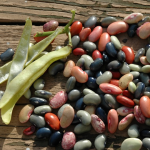
The United Nations have launched the 2016 International Year of Pulses to raise public awareness of the benefits of beans, peas and lentils. A ceremony on 10 November in Rome marked the official beginning of a year-long initiative under the slogan ‘nutritious seeds for a sustainable future’, that aims at encouraging the utilisation of pulses throughout the food system, drawing attention to their benefits for soil fertility and adaptation to climate change as well as for combating malnutrition. “Pulses are important food crops for the food security of large proportions of populations, particularly in Latin America, Africa and Asia, where pulses are part of traditional diets and often grown by small farmers,” said José Graziano da Silva, Director-General of the Food and Agriculture Organisation (FAO). He underlined that pulses are a highly nutritious source of protein and vital micronutrients that can greatly benefit people’s health and livelihoods. The FAO chief added that pulses have double the proteins found in wheat and triple the amount found in rice. They are also rich in amino acids and b-vitamins. “Despite strong evidence of the health and nutritional benefits of pulses, their consumption remains low in many developing and developed countries. The International Year can help overcome this lack of knowledge,” UN Secretary-General Ban Ki-moon said in a message. Pulses are also an alternative to more expensive animal-based protein. According to FAO, protein sourced from milk, for example, is five times more expensive than protein sourced from pulses. On the other hand, farmers can obtain higher prices for pulses than for cereals. Pulses therefore offer an opportunity to lift farmers out of rural poverty. There are hundreds of varieties of pulses grown worldwide, including all varieties of dried beans, such as kidney beans, lima beans, butter beans and broad beans, as well as chickpeas, cowpeas, black-eyed peas and pigeon peas. But pulses are not only good for human health: The FAO also stressed the potential of pulses to improve animal and soil health and support biodiversity: Due to their nitrogen-fixing properties, pulses can improve soil fertility and reduce the dependency on synthetic fertilisers, thus leading to a smaller carbon footprint and less greenhouse gas emissions. By improving soil health, pulses not only help to enhance the productivity of farmland but also promote biodiversity, as they create a rich home for germs, bugs and bacteria of all kinds. In addition, using pulses as cover crops and in intercropping systems can reduce soil erosion. This shows that pulses are closely linked to the topic of the 2015 International Year of Soils. (ab)
09.11.2015
World food prices up 3.9% in October due to adverse weather

Weather-driven concerns about sugar and palm oil supplies have pushed up world food prices in October, the UN Food and Agriculture Organisation (FAO) said on Thursday. The FAO Food Price Index, a trade-weighted index that tracks prices on international markets of five major food commodity groups, reached 162 points in October, up 3.9% from September. Although food commodities were still 16% cheaper than one year ago, the price jump is a reversal of the trend from earlier this year: In July, food prices fell to their lowest level in almost six years. “The overriding issue is the weather,” Abdolreza Abbassian, a senior economist at the FAO, told Bloomberg. “There is definitely more potential for higher prices in the coming months.” The forecast for global cereal production was slightly reduced to 2.53 billion tonnes, 1.1% below last year’s record output. The UN agency said that the reduction reflects dimmer expectations about maize crops in India and Ukraine and wheat harvests in southern parts of the Russian Federation, mostly due to adverse weather. In addition, drought in Thailand led to a lower seasonal rice harvest projection. FAO predicts that world cereal utilisation in 2015 will be at 2.528 million tonnes, almost reaching production levels. Only 43% or 1096 million tonnes of cereals will be used as food. FAO projects a 1.6% growth in cereal use for animal feed, which will be concentrated in Asia, driven by increases in China, Saudi Arabia and Turkey. The FAO’s Sugar Price Index mainly contributed to the overall price increase, jumping 17.2% from September due to fears that excessive rains in Brazil and droughts in India and Thailand could destroy sugercane harvests. Another reason for the price jump is a 6.2% increase in vegetable oil prices as concerns intensify over the impact of El Niño on next year’s palm oil supply in Indonesia, coupled with slow progress in soybean plantings in Brazil as a result of bad weather. The FAO Dairy Price Index rose 9.4% from September amid concerns that milk production in New Zealand would decline, whereas meat prices remained stable. (ab)
04.11.2015
UN expert warns about impact of climate change on food security
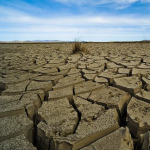
The United Nations has warned that climate change is a major threat to food security and has called for a shift from industrial agriculture to agroecology. In a press release on Monday, Hilal Elver, the UN Special Rapporteur on the right to food, said that increased frequency and intensity of extreme weather, rising temperatures and sea levels, as well as floods and droughts will threaten food security: “All these climate incidents will negatively impact on crops, livestock, fisheries, aquaculture and on people's livelihoods,” she added. The food expert predicts that the negative impact from climate change on agriculture could subject another 600 million people to malnutrition by 2080. “Those who have contributed the least to global warming are the ones set to suffer the most from its harmful effects,” stressed Ms. Elver. “Urgent action is needed to respond to the challenges posed by climate change,” she added, “but mitigation and adaptation policies should respect the right to food as well as other fundamental human rights.” According to Hilal Elver, responding to the food demand through large-scale production oriented agricultural models is not the right solution. She underlined the “need for a major shift from industrial agriculture to transformative systems such as agro-ecology that support the local food movement, protect small holder farmers, respect human rights, food democracy and cultural traditions, and at the same time maintain environmental sustainability and facilitate a healthy diet.” Her statement comes four weeks ahead of the UN climate change conference COP 21 which will take place in Paris from 30 November to 11 December. The aim of the summit is to achieve a universally applicable legal instrument under the UN Framework Convention on Climate Change (UNFCCC) to reduce greenhouse gas emissions. Elver stressed that any agreement must include a clear commitment by all relevant parties to ensuring climate justice and food security for all. In a recent report, presented to the UN General Assembly’s Third Committee in October, the Special Rapporteur also outlined the adverse impact of climate change on the right to food. (ab)
02.11.2015
WHO report links processed meat to cancer in humans

The cancer research arm of the World Health Organisation (WHO) has linked the consumption of processed and red meats to cancer and advised people to moderate meat consumption. In a report published on October 26, the International Agency for Research on Cancer (IARC) classified processed meat “as carcinogenic to humans” (Group 1), based on “sufficient evidence” that the consumption of processed meat increases the risk of bowel cancer. Processed meats such as ham or sausages are transformed through salting, curing, smoking or other processes to enhance flavour or improve preservation. The experts concluded that each 50 gram portion of processed meat eaten daily increases the risk of colorectal cancer by 18%. “For an individual, the risk of developing colorectal cancer because of their consumption of processed meat remains small, but this risk increases with the amount of meat consumed,” says Dr Kurt Straif, Head of the IARC programme responsible for the findings. “In view of the large number of people who consume processed meat, the global impact on cancer incidence is of public health importance.” Eating red meat like beef, pork and lamb was classified as “probably carcinogenic to humans” (Group 2A) because there was “limited evidence” available that the consumption of red meat causes cancer in humans and “strong mechanistic evidence supporting a carcinogenic effect. A working group of 22 experts from ten countries reviewed more than 800 scientific studies in many countries and populations with diverse diets to evaluate the carcinogenicity of red and processed meat. Processed meat is now in the same group as tobacco or asbestos, but the classification is based on the strength of evidence of a link with cancer, not on the risk level. While 34,000 cancer deaths per year worldwide are attributable to diets high in processed meat, cancer due to tobacco smoking is killing one million people per year. The meat industry reacted with outrage to the report and accused the cancer experts of scaremongering. This induced the WHO to clarify that “the latest IARC review does not ask people to stop eating processed meats but indicates that reducing consumption of these products can reduce the risk of colorectal cancer”. The British Nutrition Foundation recommends limiting the consumption of processed meat and eating no more than 500g of red meat a week - equivalent to 70g per day. According dietary surveys, men in the UK eat 88g of red meat per day while women eat 52g. However, around 33% of the population have more than 100g of red meat a day. (ab)
23.10.2015
Syngenta granted patent on conventionally bred pepper
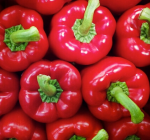
The European Patent Office (EPO) has granted Swiss agrochemical giant Syngenta a patent on a seedless pepper derived from conventional breeding. The patent also covers the plants, their cultivation, harvesting and seeds. Syngenta’s invention claim relates to a “male sterile hybrid pepper plant which grows normal-looking edible seedless fruits throughout the whole plant, wherein said seedless fruits are characterised by being at least 95% seedless.” The patent, published on October 14 under the number EP 2 166 833 B1, also includes the use of this pepper “as fresh produce, as fresh cut produce or for processing, for example canning.” Non-governmental organisations and organic producers were outraged that the EPA has once again granted a patent on a conventionally bred plant because European patent law prohibits patents on plant varieties and on methods for conventional breeding. Nevertheless, the EPO continues to grant patents on plants and their characteristics, seeds and fruits derived from conventional breeding, serving its own interests since its budget is financed by examining and granting patents. Only just in August, Syngenta was granted a new patent on a tomato derived from classical breeding. “Step by step, patent by patent, the seed giants are taking control of our daily food. In future we might even need permission to cut a pepper into pieces,” said Christoph Then for the coalition of No Patents on Seeds!, “In any case Syngenta can prevent anyone from growing or harvesting this pepper, selling it for food or using it for further breeding.” The NGO coalition calls on European governments to take decisive action and to exert their influence via the Administrative Council of the EPO, which acts as the supervisory body. According to François Meienberg from The Berne Declaration, a member organisation of No Patents on Seeds!, “the Administrative Council of the EPO can decide how to effectively implement these prohibitions and thereby stop further patents on conventional breeding. He says European governments must act immediately to stop the EPO from granting more and more patents on our daily food. (ab)
21.10.2015
Saved Syrian seeds withdrawn from Arctic seed vault for recultivation

Thousands of Syrian seeds that were withdrawn from a seed vault in the Arctic in September have been safely delivered to Morocco and Lebanon to regenerate ancient food crops lost during Syria’s civil war. The International Centre for Agricultural Research in the Dry Areas (ICARDA), the Syrian gene bank that had originally deposited the seeds in the Svalbard Global Seed Vault, confirmed on Monday that 128 boxes with a total of 38,073 seed samples were removed. “We are delighted to be able to retrieve these seeds, so that ICARDA can continue to play a vital role providing highly valuable genetic resources to our partners (…) in the ongoing work to preserve crop diversity and meet the challenges we all face – natural and man-made – to feed future generations,” said ICARDA’s Director General Dr Mahmoud Solh. 57 boxes containing forages, faba beans, lathyrus, and the wild relatives of cereals and pulses were sent to Lebanon and 71 boxes containing seeds of cultivated wheat, barley, lentil and chickpea were sent to Morocco. The seeds are copies of those originally held at the gene bank in Aleppo which preserves more than 148.000 seeds of unique varieties of wild species and regional cultivars of barley, wheat, peas and beans, adapted to agriculture in dry areas. Although the gene bank is still operative it is no longer able to make full use of its facilities and recultivate seeds due to the war in Syria. Therefore, each sample will be planted and grown at ICARDA’s research stations in Lebanon and Morocco to provide duplicate seeds, which will be used to re-establish the seed collection and also be returned to the Seed Vault for safekeeping. The seeds will be planted during this and next year’s cropping seasons and also be made available to farmers, scientists and plant breeders in the region. “Out of the terrible adversity that the people of Syria are facing, the retrieval of ICARDA’s seeds from the Svalbard Global Seed Vault is a welcome piece of good news,” said Marie Haga, Executive Director of the Crop Trust, which manages and funds the ongoing work of the Svalbard Global Seed Vault. “This proves that the measures the global community is putting in place to preserve crop diversity for future generations actually work.” The recent shipment is the first such withdrawal since the seed vault opened its doors in 2008. The back-up facility in the permafrost store 860,000 samples of crops from all over the world to protect them from man-made or natural disasters. (ab)
19.10.2015
Land grabbing grows as agricultural resources dwindle, warns report

The loss or degradation of key agricultural resources - especially land, water and a stable climate - is leading to a surge in land grabbing, according to a new report published by the Worldwatch Institute in October. The “State of the World 2015: Confronting Hidden Threats to Sustainability” warns that farmland is becoming degraded through erosion and salinisation on every continent and more and more countries depend on international markets for basic food supplies. Aquifers are being pumped faster than they are recharged by rainfall, putting pressure on many food-producing areas. As a result, countries and foreign investors purchase or lease agricultural land, threatening the food security of the people who used the land. The report states that more than 36 million hectares, an area about the size of Japan, have been purchased or leased by foreign entities since 2000, mostly for agricultural use. Today, nearly 15 million hectares more are under negotiation. About half of grabbed land is intended exclusively for use in agriculture, while another 25% is intended for a mix of agricultural and other uses. Over half of the global grabbed land is in Africa, especially in water-rich countries like the Congo. Asia ranks second, contributing over 6 million hectares, mainly from Indonesia. Large-scale purchases often do not consider the interests of smallholders who may have been working the land over a long period. In addition, if poorer countries sell out their land and water resources to foreign investors and governments this also increases their vulnerability, for example in case of misharvests. “Conserving the very base of food production - the land, water, and climate that make crop growth possible - is essential to ensure that the world’s farmers continue to produce enough food for everyone,” writes Gary Gardner, contributing author of the report. He argues that in times of dwindling agricultural resources and a changing climate, greater effort will be needed to conserve resources and to exploit opportunities for greater efficiency throughout the agricultural system. This could be achieved by preventing food waste, increasing water efficiency, conserving agricultural land and reducing the production of meat and biofuels, both of which require large quantities of land and water for grain or crops. Gardner believes that the stress on food systems can be reduced. He calls for the international adoption of the right to food, which has already been integrated in the constitutions of 28 countries, to make sure that food cannot be withheld for political reasons. (ab)
15.10.2015
Social protection can lift small-scale farmers out of poverty, UN says
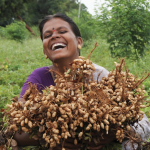
Social protection programmes can help eradicate hunger and break the cycle of rural poverty, especially if they are combined with agricultural policies. This is the main message of „The State of Food and Agriculture 2015“, a report published the United Nations Food and Agriculture Organisation (FAO) on Monday. In poor countries, social protection schemes - such as cash transfers, school feeding and public works - offer an economical way to provide vulnerable people with opportunities to move out of extreme poverty and hunger and to improve their children’s health, education and life chances. “Social protection programs allow households to access more food – often by increasing what they grow themselves – and also make their diets more diverse and healthier,” said FAO’s Director-General José Graziano da Silva in a press release. “These programs can have positive impacts on infant and maternal nutrition, reduce child labor and raise school attendance, all of which increase productivity,” he added. According to FAO, such programmes currently benefit 2.1 billion people in developing countries in various ways, including keeping 150 million people out of extreme poverty. However, the vast majority of the world’s rural poor are yet to be covered. Expanding such programs in rural areas and linking them to inclusive agricultural growth policies would rapidly reduce the number of poor people, the report says. Stronger coherence between agriculture and social protection interventions could help protect the welfare of poor, small-scale farmers, helping them manage risks more effectively and improve agricultural productivity. The report stresses that the notion of social protection reducing people’s work effort is a myth. It rather gives beneficiaries greater choice, they can rely more on home production on their own farms rather than on poorly paid agricultural wage work. Social protection strengthens livelihoods rather than fostering dependency, the FAO says. The findings of the report show that social protection is an investment, rather than a cost. This is also clearly illustrated by Brazil's Bolsa Família, a well-integrated scheme that reaches a quarter of the population and costs only 0.5 percent of the country’s gross domestic product (GDP). According to the FAO, some $67 billion a year in income supplements, an amount equivalent to less than 0.1% of global GDP, would – along with other targeted pro-poor investments in agriculture – allow for the eradication of hunger by 2030. (ab)
14.10.2015
Ten principles to guide the transition to sustainable food systems
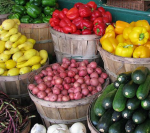
The International Panel of Experts on Sustainable Food Systems (IPES-Food) has adopted a set of 10 principles to guide the transition to sustainable food systems. The panel is a new initiative that brings together experts from different disciplines to support, inform and advise the policy debate on how to reform food systems across the world. “The shift to sustainable food systems is urgently needed. But this urgency must not lead us to rush headlong into solutions that resolve one problem while worsening another,” said the panel’s co-chairs Olivier De Schutter, former UN Special Rapporteur on the right to food, and Olivia Yambi, a nutritionist and former UNICEF representative to Kenya. IPES-Food has identified five principles to shape sustainable food systems of the future as well as five principles for the types of knowledge and analysis that are required to support this transition. First, food systems need to become sustainable in all dimensions, including environmental, health, social, cultural and economic dimensions. Sustainable systems should deliver diets that are nutritious, affordable and culturally acceptable and provide food security for all people, including future generation. Second, food systems must be diverse, multifunctional and resilient. This requires a change of course in agriculture and full support for agroecology in order to sustain yields and agro-ecosystems in the longer-term. This needs to be complemented by diversity in supply chains and markets. Third, decision-making in food systems must be democratised in ways that empower disadvantaged actors and help to realise the human rights of all, including the right to food. Fourth, social and technological innovation is to play an important role in the transformation of food distribution and retail practices, as well as modes of production. Fifth, new indicators of progress must be developed in order to capture the benefits of equitable, resilient, diverse, nutrient-rich food systems. The experts also underline the important role of knowledge in transforming food systems. “The knowledge that is brought to bear can sustain existing power dynamics, or help to reverse them,” IPES said. To shape the food systems of the future, knowledge and analysis is needed that is holistic, power-sensitive, transdisciplinary, critically engaged and independent. (ab)
